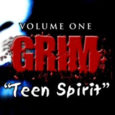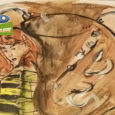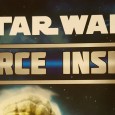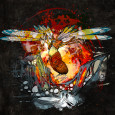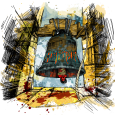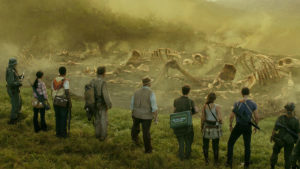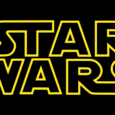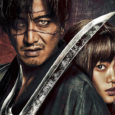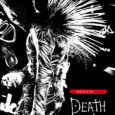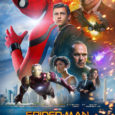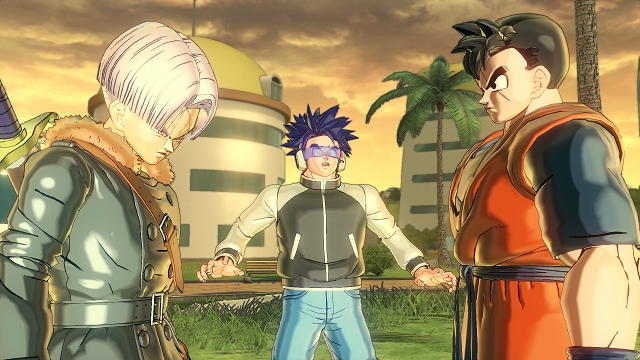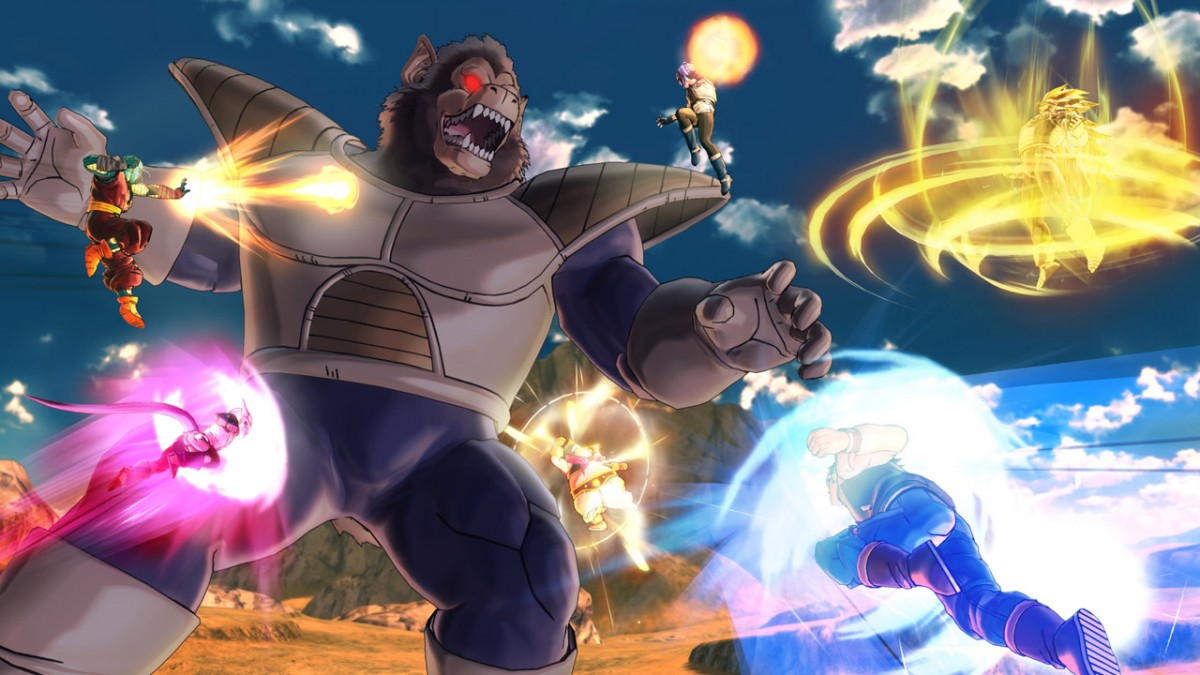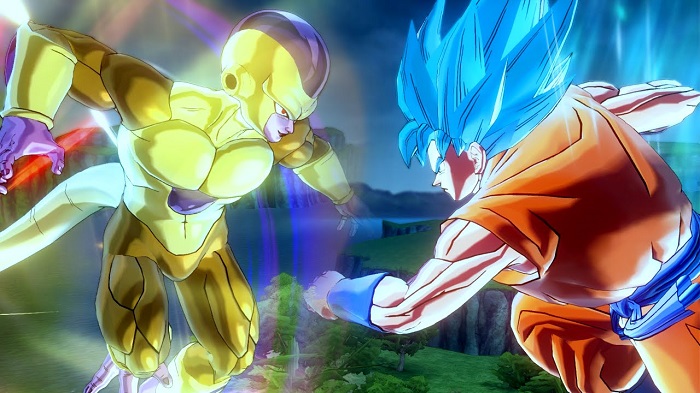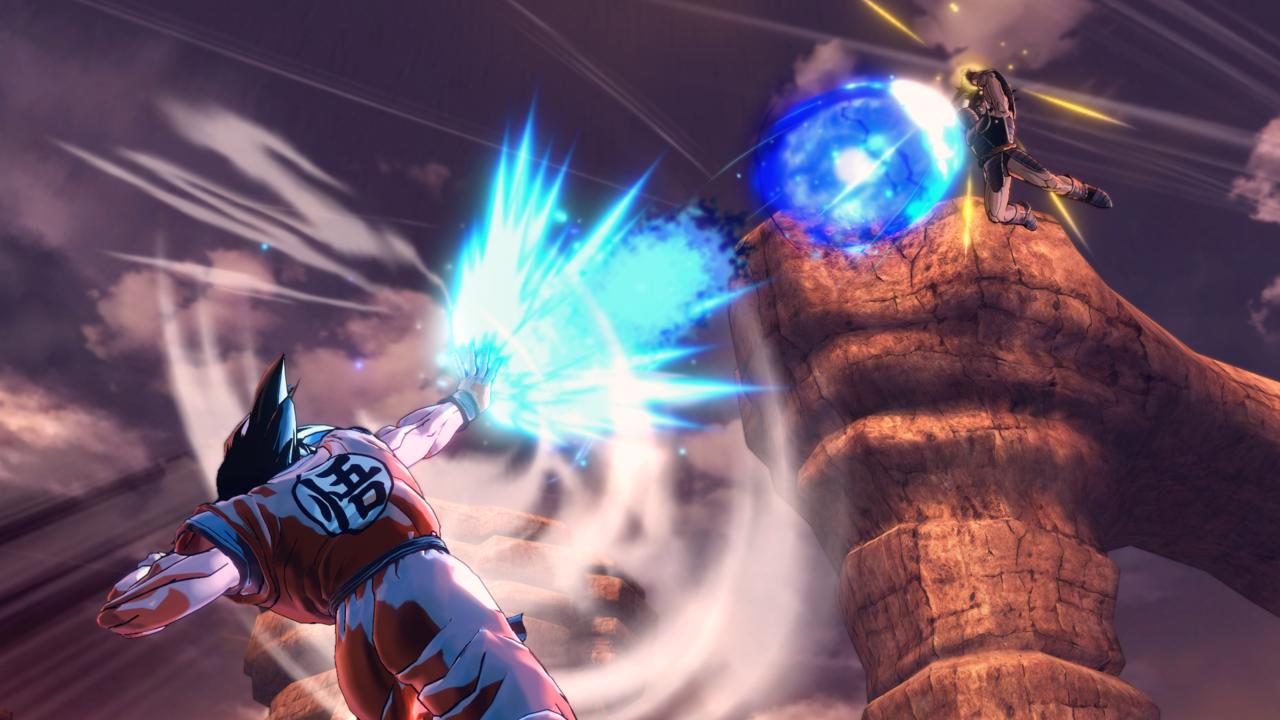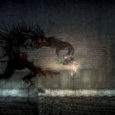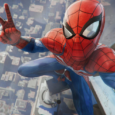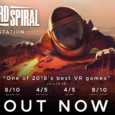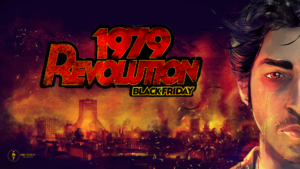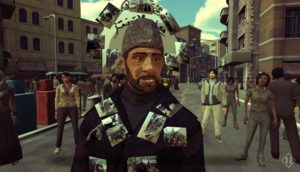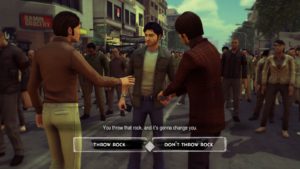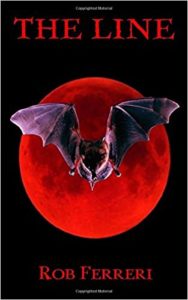 Vampires are a staple of Halloween and one of the most famous horror icons around. So I figured reading a vampire tale for Hallow-Reads was as good an idea as any. That’s when I was presented with The Line by Rob Ferreri, a self-published novel about a team of vampire hunters.
Vampires are a staple of Halloween and one of the most famous horror icons around. So I figured reading a vampire tale for Hallow-Reads was as good an idea as any. That’s when I was presented with The Line by Rob Ferreri, a self-published novel about a team of vampire hunters.
The Line tells the story of Alexander, an immortal ex-vampire and his mission to hide an ancient amulet from Dorian, his ex-master. When the amulet is discovered in present day New York, Alexander assembles a team to help him combat the vampire threat and protect the amulet. The team, which he dubs “the Line” are chosen ones, people who come from a long line of vampire slayers. The plot boils down to Buffy the Vampire Slayer meets The Avengers and works in many ways. However, there are quite a few ways that it just falls flat.
The book opens with a scene of our Alexander being healed of his vampirism and turning against his former brethren. It’s an interesting concept, one that doesn’t get explored often in pop culture, but it also doesn’t get explored much here, either. We know Alexander had a history as a vampire and worked with Dorian, but Ferreri never delves into that. There’s no back story showing us how Alexander became a vampire or what regrets he may have. We’re only told he was a vampire, isn’t any more, and now wants to rid the world of vampires.
The dialogue tags were the most tedious part of the book. Dialogue tags should be straightforward as the most effective ones are a simple “she said” or “he asked.” Sure, it’s great to mix them up a bit for some exclaiming, questioning, or accusing. But The Line makes them all as homogenous as possible. Every dialogue tag follows all of the dialogue. Every time. Now, this isn’t how most authors handle it; in scenes with two characters, for example, it’s generally easy to follow the flow of the dialogue, making the need for a tag each time unnecessary. But Ferreri uses them for every line and it gets very distracting.
From my understanding, The Line was originally written as a screenplay, and after reading it, that’s fairly obvious. The dialogue tags, for example, reminded me of slugs, the character name that precedes each line of dialogue, making it easy for the actor to know which lines are theirs and which belong to their costars. Sure, Ferreri punches up his dialogue with adverbs, but these are little more than parentheticals, the stage direction used to indicate how the actor should deliver the line.
This isn’t the only similarity The Line as a novel has to a screenplay. The book focuses a lot on the action; every few pages, a new action scene occurs. Whether it’s a showdown between the protagonists and the bad guys or some sort of training exercise, action scenes take precedence. Which makes sense considering The Line is a vampire based action adventure more than anything else. However, this focus detracts from any sort of character development, of which there is very little.
The Line is straight forward, to the point, and exactly what one could expect from a ninety minute action flick.
Does a novel need chapters of deep backstory to be enjoyable? No, not at all, but unlike movies, novels aren’t constrained by a certain length. There’s no hard and fast rule that a novel should be a set number of pages. In that sense, novels have an advantage over films when it comes to character development.
The Line implements a sort of ticking clock, yet another action movie trope. Alexander and Co must stop Dorian from getting the other half of the artifact before the next lunar eclipse or the world will suffer. Because of this, the plot moves at hyperspeed. Characters are introduced, destinies explained, trainings held, and lots of fight. There’s no time to get to know the cast. We see them put through the wringers of training a total of one time before they accept their fate. They trust each other implicitly after knowing each other for at most a couple of days. There’s very little internal conflict and it gets resolved in a page or two, which diminishes the stakes.
The parallel between The Line as a novel versus a screenplay makes sense when you look at author Rob Ferreri’s history. He’s worked on a few full-length feature films, most of which were made prior to the publication of The Line. He clearly has a strong grasp of writing, but it seems that scripting is a difficult habit to shake. Novels and screenplays are two different creatures and what works in one doesn’t necessarily work in the other. I don’t feel that his writing style is bad; just that it’s not the ideal approach for a novel.
Don’t get me wrong; there are quite a few good parts about The Line, most notably the character introductions. When we meet each of the characters, they get the spotlight in their own little vignette of a story. Detective Jay Hong is ambushed during one of the biggest cases of his career. The Blades brothers, Diego and Julian, are career criminals and we first see them during a high-octane car theft and eventual chase. Lena Somnianti is a sophisticated artist and fencer, a well-travelled and intelligent woman. They all make grand entrances, yet don’t really live up to their promise. Sure, they’re competent enough in their own right but none of them ever feel fleshed out besides what we learn at the outset.
This is really the fatal flaw of The Line. It never really lives up to its own story. It’s complete, has a plot and a diverse cast, but that’s the bare minimum when dealing with a novel. As a film, The Line would have been magnificent fun. More Underworld than Anne Rice, it didn’t quite fit into my idea of “horror” so it probably wasn’t the best entry for Hallow-Reads, but I still found myself engrossed in the tale as it unfolded.
The Line is available on Amazon. You can also see more of Ferreri’s work by visiting his comic publisher, Evil Kat Comix.
Grade: C
Don’t forget to try our Ten Family Friendly Halloween Movies to help lull the kiddos into a candy coma! Afterward, you can set the mood with Five Albums to Flesh Out Your Halloween Playlist and huddle under the covers with Netflix and Chilling – Halloween Movie Edition. Any other off-beat Halloween suggestions to throw our way? You can let us know on Twitter @SubCultured or come party like its 1599 in our Discord server!
If a tree falls in a forest, and a mythological gigantic ape picks it up to use it as a weapon, does it make a sound? Yes, that sound is me in the theater audibly uttering “wow” through a giddy smile. This is the true test Kong: Skull Island has to pass or fail. Could it not only entertain but “wow” audiences with its spectacle? Fortunately, it unquestionably amazes with its stunningly-crafted CG and scale, but it’s at the expense of smooth dialogue and strong characters.
In the latest Kong retelling, the story is as thin as you’d expect, since the emphasis is on the origins of these monsters. As the Vietnam war comes to an end, a group of determined scientists implores the government to send a military escort with them to an undiscovered island. Along the way, said scientists hire a tracker (Tom Hiddleston). Separately, a photographer tags along (Brie Larson). The plot broken down in a sentence is essentially “some dummies go to Kong’s island to study things.” I’m never a fan of being reductive, but a film isn’t supposed to make it so easy to do. Regardless, I suppose that’s not why we eagerly watch these types of popcorn blockbusters.
Commendably, Warner Bros. Pictures employs one of the strongest ensemble casts you’ll see in a movie all year. Hiddleston, recent Oscar winner Larson, Samuel L. Jackson, John Goodman, John C. Reilly, Toby Kebbell, Shea Whigham, Thomas Mann, and Jing Tian star, to name a few. The film also features a Straight Outta Compton reunion with cast members Jason Mitchell (Easy E) and Corey Hawkins (Dr. Dre). The casting aspect alone held so much promise on paper, but this potential felt largely squandered.
Sam Jackson and John C. Reilly are clearly taking liberties and enjoying it in their respective roles, but everyone else is strikingly forgettable. There’s attempted interplay between a couple of the marines that ultimately falls flat. Heavy-hitting actors Hiddleston and Larson are simply present to be a conduit of plot details for us, the audience. Most of what they do while on camera is react with the best surprised expression they can muster. Sure, the two have distinct occupations but it’s merely an excuse to carry them into this dangerous adventure. Not to mention, Hiddleston’s James Conrad did very little tracking at all. As far as definitive personality traits, I didn’t notice any from Hiddleston, Larson, or the many other expendable individuals.
As I touched on, Reilly and Jackson are a blast to watch as they chew up their scenery. Whether improvised or purposefully written, the jokes never seem to land pre-Reilly. Like he does in his prior comedic work, he has a natural delivery and general presence that inspires laughter. Jackson as Colonel Packard recited some insane lines in the vein of a cheesy ’90s action villain with such hilarious conviction. The duo was nothing short of a joy to see perform.
We have to praise the real star of the show: Kong. Everything about him in Skull Island exceeded my expectations. If your primary complaint of 2014’s Godzilla was “where’d that enlarged lizard thing go?,” prepare to be satisfied. Kong appears in the first 3 minutes, and they don’t hold back as a means to build tension (which I personally appreciated in the latest Godzilla effort). At times, he’s spotted merely walking around the island, and every frame he occupies feels majestic. Terry Notary put forth a tremendous motion-capture effort that added a surprising amount of nuanced personality to the familiar beast. More than that, Kong is written with a layer of ingenuity. In his several oversized-creature battles, he uses his surroundings and tools he might spot at random to their full potential to aid him in bringing down his enemies. Kong himself should satisfy the majority of moviegoers.
Another facet I appreciated from the picture was director Jordan Vogt-Roberts‘ work behind the camera. There are plenty of carefully constructed frames with a remarkable colorful concoctions. After the movie rushes past certain crudely-written scenes with one-dimensional supporting characters, Vogt-Roberts squeezes in intricately vibrant set pieces. Whether it’s a fast-paced action sequence involving an abundance of fire or Kong purely looking at a sunrise, he shows off his knack for capturing the beautiful production design in a visually-palpable way. Unfortunately, he’s not given many opportunities to display these skills on more than a couple occasions.
I may have levied quite a few criticisms against this flick. Nevertheless, a visit to the theater to see Kong: Skull Island on the silver screen is a good investment. If you expected occasional astounding visuals and fantastic monster fights, then Skull Island will distribute that in spades. Anticipating tangible character development and dialogue that doesn’t make you cringe is simply too much to ask. While we always prefer a satisfying mixture of both, Kong is still an enjoyable (literal) giant blockbuster. Also, don’t forget to remain seated for a post-credits tease. You’ll start to see how the larger Warner Bros. MonsterVerse starts to connect, and it’s very exciting.
Grade: C
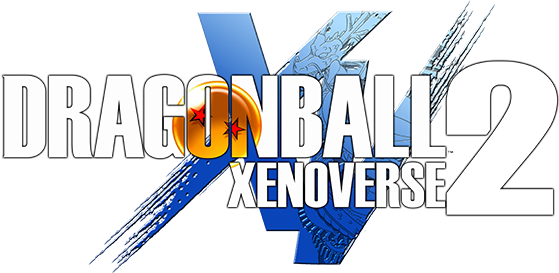 Dragon Ball Z games have launched in various degrees of quality. It is always good to practice skepticism with these games because for every great game like Dragon Ball Z Hyper Dimensions on the Super Nintendo, we get three horrific entries like Dragon Ball Z Raging Blast. It is never fun being burned by a bad game adopted from a pre-existing franchise with personal and nostalgic ties. Thankfully the new Xenoverse series has acted as a new age for incredibly fun Dragon ball Z games when the first entry came out back in 2015. The sequel, Dragon Ball Xenoverse 2, moves the franchise forward with minimal changes but carries the torch of the original by bringing quality, fandom, kinetic controls, and an incredible roster to longtime fans of the anime.
Dragon Ball Z games have launched in various degrees of quality. It is always good to practice skepticism with these games because for every great game like Dragon Ball Z Hyper Dimensions on the Super Nintendo, we get three horrific entries like Dragon Ball Z Raging Blast. It is never fun being burned by a bad game adopted from a pre-existing franchise with personal and nostalgic ties. Thankfully the new Xenoverse series has acted as a new age for incredibly fun Dragon ball Z games when the first entry came out back in 2015. The sequel, Dragon Ball Xenoverse 2, moves the franchise forward with minimal changes but carries the torch of the original by bringing quality, fandom, kinetic controls, and an incredible roster to longtime fans of the anime.
The adventure continues to be yours in this entry and you again create your own character to participate in some of the most memorable fights in the Dragon Ball Z lore. Expect all the fast action, hard punches, enormous energy beams, and evasive teleportation maneuvers that made the TV show iconic.
There are plenty of customization options to choose from as you appoint you look to the five races of, Sayian, Namekian, Human, Buu, and Frieza race. Each race has their own ability to transform. Sayians go Super, Frieza goes perfect, Buu goes Kid, humans have hidden potential, and the Namekian’s grow large like Lord Slug. Nobody is left out of the transformation game this time around which levels the playing field in a big way. The other races lacked a true transformation which found those character under powered when fighting against transformed Super Sayians. This addition was more than welcomed.
Once you cook up your fantasy character, you are dropped right into the world of the Time Patrollers where you’ll help keep time’s flow safe from the dastardly villain duo of Towa and Mira. These characters return from the first game and use their energies to increase the power of other villains across time. These time manipulators team up with Turles and Lord Slug and tackle every major moments in the Dragon Ball Z history. These super powered versions of classic villains are determined to change the timeline for the worse. Your job as a Time Patroller is to ensure that the events go according to how they originally transpired. For whatever reason your original character’s presence does not affect time like the presence of new villains, so in that aspect the narrative makes little to no sense. Leave logic at the door for this story folks. The time traveling rules are basically nonexistent and offered up in convenient and illogical ways.
The mechanics are not much different from Xenoverse 1, however, they are refined and honed. Everything just feels faster in all the right ways, which for a Dragon Ball Z game is majorly important. You want to feel like Vegeta when reeling back for a final flash and you want to harness the speed of Gohan when you are zipping around the large areas looking for the next bout. This game delivers on that fantasy of embodying a Z Fighter, and any fan of the series would be hard pressed to feel differently.
There are plenty of customization options as you progress in the game. Once you start collecting costume pieces and buying new articles of clothing with your awarded currency. You can look like some of your favorite characters or go for a completely unique look as you pan through your item drops to see which clothing has the best stats and look. If you don’t like the stats but love the look of your clothes, there is a remedy for that! QQ Bangs can be mixed up by combining clothing and power items. This negates the effects of the clothing stats which, in turn, uses the QQ Bang stats, which gives you the choice to look how you want but have the stats that fit your play style.
There are other things to do in the HUB world as well. This world acts as your lobby, a place your character engages in as you queue up missions and quests.This open area known as Conton City, is much bigger than Xenoverse 1’s HUB world of Toki Toki City. Your created characters. It is so awesome to see all their creations as you run around the world communicating through emotes. Bonus: No load times for this HUB area with up to 250 other player-controlled combatants, all with their owns hinder this areas as you fly from end to end and do small quests and missions in that world.
There are plenty of activities to occupy your time in Conton City. Time rifts are quests that has you going to famous locations like Guru’s house, Frieza’s ship, Capsule Corp Building, and Master Roshi’s Island. Here you will find your character participating in missions that are specific to these locations. Guru’s house will have you fighting off Frieza forces and collecting Namekian Dragon Balls. While over at Frieza’s ship you will find yourself aligning with different Lieutenants as they usurp one another all in the name of becoming Frieza’s right had man. Dragon Ball Xenoverse 2 does not lack content, but it does lack diversity. In any of these quests, the main thing you are doing at any time will always be fighting. The only things that do change are the enemies, the win and lose stipulations, and the arenas you fight in. It sounds like a negative point but it is no more repetitive than any other fighting game.
The gamplay loop is very exposed early on, but that comes with the territory of these mission based/grind heavy/loot collecting games. You will spend your time doing all the various types of missions I have talk about, which are ultimately the same mechanically. You will load up a story mission, fight some bad guys, and then at the end of the match get some credits, items drops and possibly even new moves. You will then utilize item drops, sell them off, or mix them into new items. Doing story missions unlocks patrol missions which are just variations of the story quests. In between these mission you can do all the time rift events which, again, is just more fighting. The game is repetitive, there is no denying that. I think this shortcoming is overshadows by all the other working parts of this game though.
The story and mission progression have not changed much from Xenoverse 1. The story itself is all about fixing the timeline of the original series, while the Patroller Missions, which can be played up to 3 players co-op online, takes more creative chances as yr avatar teaming up with the bad guys in alternative-history-like scenarios. Playing online with 2 other friends is a blast and has quickly become one of my favorite co-op experiences of this year. There are also 6-player raid missions where you’ll participate in fighting big bosses for big payouts and loot. These fights get incredibly large scale in terms of the open spaces you occupy and the amount of movement and activity going on at any given time. The intensity levels of these battles really ramp up as the screen becomes a cornucopia of colors as you blast energy waves together in an attempt to take down the damage sponges in the form of long time villains.
Out of all the games this year that I have played, the only game me and my gamer group could agree on to play co-op this year was Dragon Ball Xenoverse 2. My squad and I loved the first game and played hundreds of hours of co-op, so it was obvious that we would return to this series. Also an important personal note if you’re debating to purchase this for group gaming: out of the four people I play this game with, only 2 of us are major Dragon Ball Z fans, one is a passive fan, and the other hates the entire series. He plays the game because it offers fun co-op, jaw dropping graphics, and a great fighting game/action RPG hybrid.
There is nothing else like the Dragon Ball Xenoverse series. The creative team, Dimps, has taken everything they did right about earlier fighting game entries, and shaped it up into an Action/Adventure RPG hybrid. Much like what Gearbox did with marrying the first person shooter genre to the Role Playing Game genre with Borderlands, Xenoverse series successfully merges two completely different game types to make something that feels fresh. I think that anybody, fan or not, that is willing to give it a try, can find something to enjoy about this game. Buy it now if you’re a longtime fan, try and check it out if you have a passing interest…but this is one of those gems of this year that will be sorely under-appreciated by most of the gaming community.


